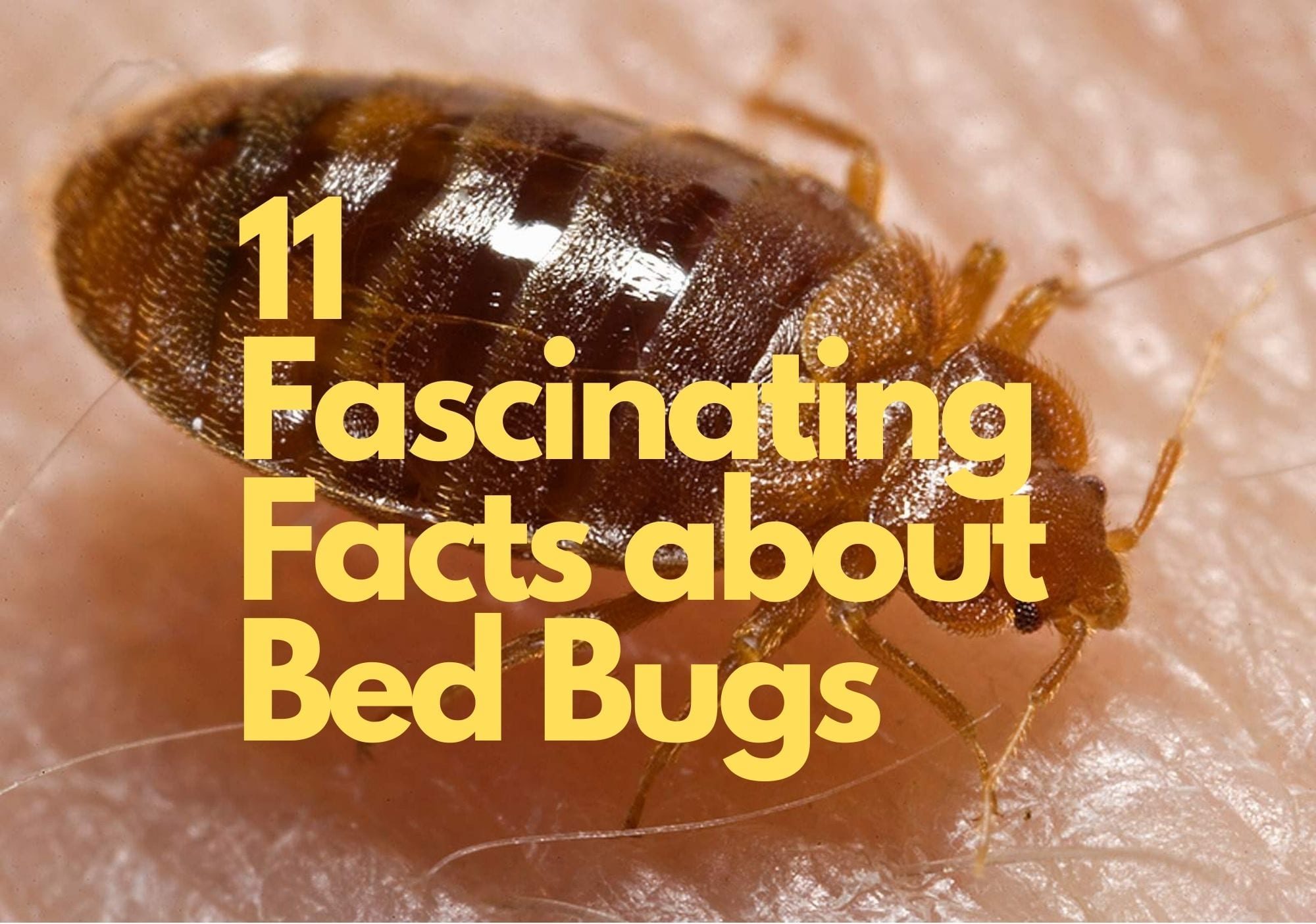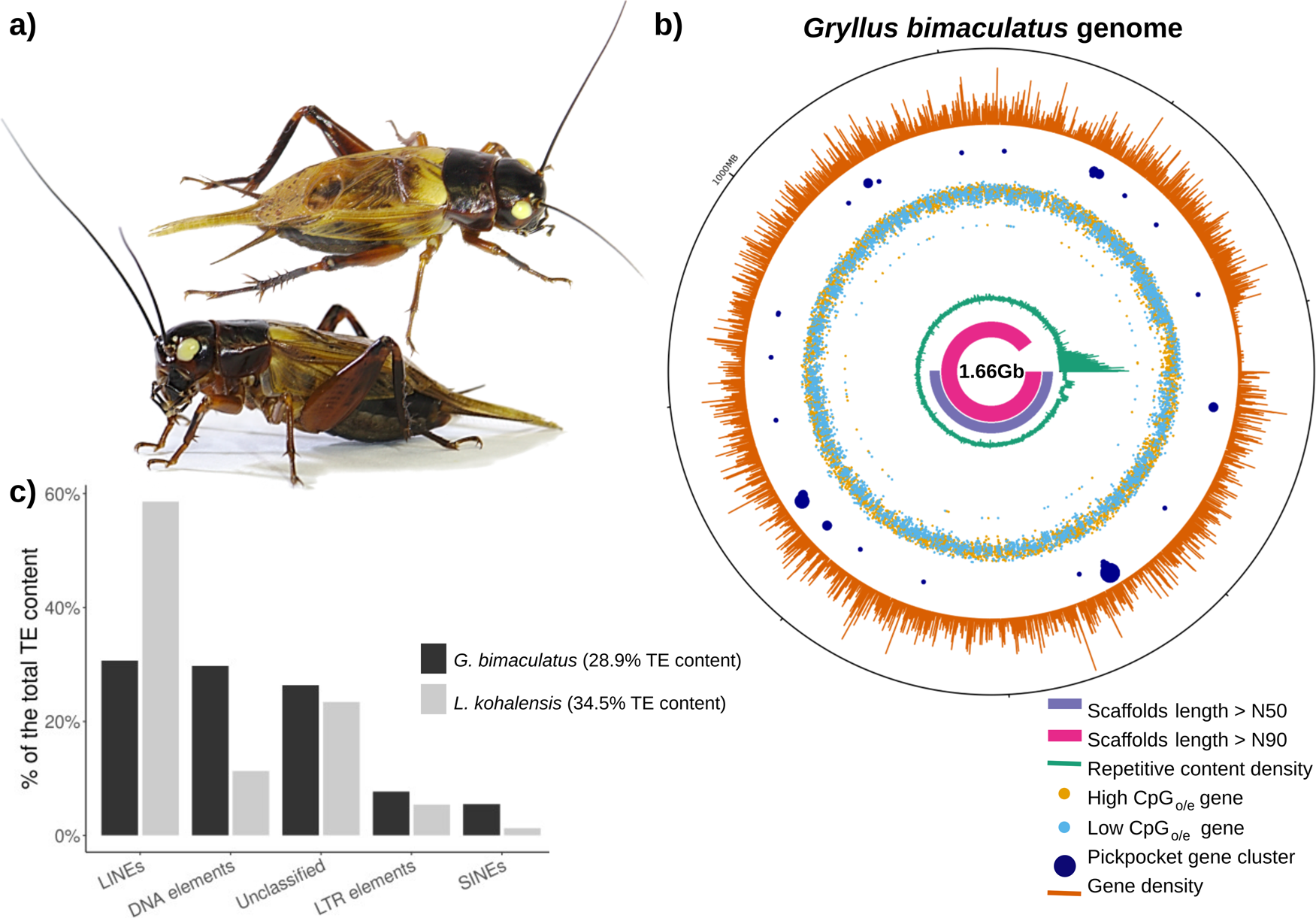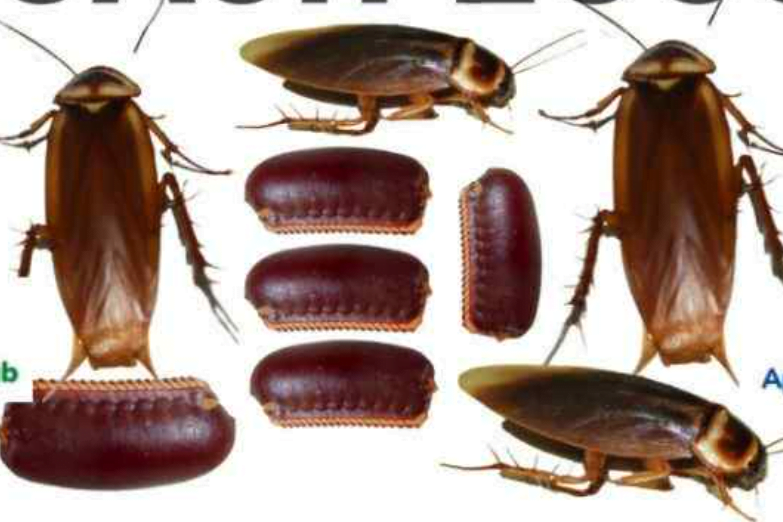Cockroaches belong to the order Blattodea, while beetles form the Coleoptera order. Key differences include their wings and metamorphosis processes.
Exploring the plethora of insect species, cockroaches and beetles often capture our attention due to their common presence in various environments. Despite initial appearances, these two groups of insects differ significantly in both physiology and lifestyle. Cockroaches are known for their flat bodies and leathery forewings which serve as protection for their delicate hind wings.
Beetles, on the other hand, display a distinctive feature with their hard, shell-like forewings, called elytra, which safeguard their flying wings underneath. Additionally, beetles undergo complete metamorphosis, transforming from larvae to pupae before becoming adults, while cockroaches experience an incomplete metamorphosis, where nymphs resemble adults from the outset. These distinctions are crucial for understanding their ecological roles and developing effective control methods for pest species among them.

Credit: www.excelpestservices.com
Introduction To The Insect World
The insect world is an astonishing place, brimming with variety. In this diverse kingdom, cockroaches and beetles stand out for their unique characteristics, adaptations, and roles in their ecosystems. Exploring their differences not only enriches our knowledge but also helps in their identification and management within our environments.
Diversity In The Insect Kingdom
The spectrum of insect species on Earth is remarkable. With over a million described species, insects represent more than half of all known living organisms. The range includes everything from the smallest fairyflies to the largest beetles.
- Colorful wings, intricate patterns, and variable body structures distinguish these creatures.
- They occupy multiple niches in every ecosystem across the globe.
- Insects play critical roles in pollination, decomposition, and as food sources.
Common Confusion: Cockroaches Vs Beetles
Despite their distinct differences, cockroaches and beetles often cause confusion. Their similar body shapes and sizes can trick an untrained eye. However, key features set them apart:
| Cockroaches | Beetles |
|---|---|
| Oval-shaped, flattened bodies | More diverse body forms with hard exoskeletons |
| Long, threadlike antennae | Antennae can be threadlike or clubbed |
| Lack the hardened wing covers (elytra) found in beetles | Elytra protect the delicate wings underneath |
| Runners with spiny legs | Beetles have legs suited to their specific habitats |
By understanding their distinct features, we can appreciate their diverse roles and know how to manage their presence in our homes and gardens.

Credit: www.tiktok.com
Physical Attributes Separating Cockroaches And Beetles
No two insects ignite repulsion like cockroaches and beetles when they scuttle across your floor.
Despite this grim similarity, these creatures are distinct.
Understanding their physical attributes is necessary for proper identification
Let’s dive into the key differences that set them apart.
Exoskeleton Variations
The exoskeleton, or outer shell, is the foremost differentiator.
Cockroaches exhibit a leathery and flexible exoskeleton.
In contrast, beetles boast a hard and rigid outer layer, known as the elytra.
These variational approaches to protection illustrate the vast evolutionary paths taken.
Distinctive Antennae And Limbs
Beyond the exoskeleton, antennae and limbs mark clear distinguishing features.
Beetles often have antennae with a clubbed end, varying wildly in shape and size.
Cockroaches’ antennae are long, thin, and thread-like, offering them tactile navigation.
Examining their legs also yields differences; beetles have thicker and more robust legs.
Cockroaches, on the other hand, have long, spiny legs adapted for speed.
Behavioral Patterns: Cockroach Vs Beetle
Understanding the behavior of cockroaches and beetles is fascinating. Despite both being insects, there are stark differences in how they live and what they eat. In this post, we dive into their unique habits, from where they choose to reside to their dietary preferences. Let’s explore these intriguing creatures!
Habitats And Dwelling Preferences
Cockroaches and beetles pick distinct places to call home. Cockroaches thrive in warm, humid areas. They’re often found indoors, hidden away in cracks or behind appliances. However, beetles prefer varied environments. Many favor the outdoors, taking shelter under bark or within leaves. Some even burrow into soil. These habitats reflect their adaptability and how they’ve evolved over time.
Feeding Habits And Diet
The diet of cockroaches and beetles can tell us a lot about them. Roaches are not picky eaters. They consume almost anything, which includes food scraps, paper, and even glue. Conversely, beetles have a more specialized diet. They mainly feed on plants, fungi, or even other insects. Some beetle species can be quite beneficial, helping to break down dead trees or control pest populations.
Let’s look at a comparison table summarizing these behavioral patterns:
| Aspect | Cockroach Behavior | Beetle Behavior |
|---|---|---|
| Habitats | Prefer indoors, humid places | Prefer outdoors, various environments |
| Feeding | Omnivorous, eat almost anything | Mostly herbivorous or predatory |
Understanding these behaviors helps us appreciate the diversity in the insect world and enables better pest management strategies.

Credit: www.nature.com
Lifespan And Reproductive Strategies
Exploring the world of insects can be quite fascinating, especially when delving into lifespan and reproductive strategies. Cockroaches and beetles, although similar in appearance to the untrained eye, exhibit significant differences in these aspects. Understanding their unique breeding cycles and survival strategies gives insight into why they have adapted so well to diverse environments.
Breeding Cycles
Beetles and cockroaches show distinct patterns of reproduction:
- Cockroaches: Often breed year-round.
- Beetles: Their breeding may be seasonal, depending on the species.
Cockroaches are known for their rapid reproductive rate. A single female can produce hundreds to thousands of offspring in her lifetime. In contrast, beetles have a more varied range of reproductive strategies. Some lay only a few eggs, while others can lay hundreds.
Survival And Longevity
| Insect Type | Average Lifespan | Note |
|---|---|---|
| Cockroaches | 1-3 years | Can survive without food for a month. |
| Beetles | 2 weeks to several years | Lifespan varies greatly among species. |
Cockroach survival is legendary, with some species living up to three years. Their resilience contributes to their longevity, with certain species capable of surviving without their heads for weeks. Beetle longevity can be just as impressive, though it varies greatly among the thousands of species. Some beetles have developed unique ways to withstand harsh conditions, like the ability to enter diapause—a dormancy state that can greatly extend their lives.
Ecological Impact And Significance
Understanding the role of insects in our environment highlights their importance. Cockroaches and beetles differ vastly, not only in appearance but also in how they affect our ecosystems. Let’s dive into the ecological contributions and challenges these creatures present.
Contributions To Ecosystems
Beetles play a crucial role in nature, often helping ecosystems thrive. Here are some ways they contribute:
- Decomposition of organic matter, recycling nutrients
- Pollination of plants, supporting biodiversity
- Food source for other animals, maintaining the food chain
Cockroaches, although less popular, have their role too:
- Breaking down dead plant material
- Feeding on waste, cleaning the environment
Pest Status And Human Interaction
Despite their environmental roles, both insects can become pests. Here are the key points:
| Insect | Pest Status | Human Interaction |
|---|---|---|
| Beetles | Some damage crops | Managed through ecological farming practices |
| Cockroaches | Spread germs, cause allergies | Controlled through sanitation and exclusion |
Cockroaches are known to invade homes and spread diseases. This encourages ongoing research into safe, effective pest control. Meanwhile, some beetles like the ladybug are beneficial to gardeners, keeping aphid populations low.
Navigating Through Evolution: Ancestry And Adaptation
Exploring the tree of life can be a fascinating journey. Especially when it comes to understanding how distinct creatures like cockroaches and beetles navigate their separate evolutionary paths. Let’s dive into the intriguing world of ancestry and adaptation that shapes these resilient insects.
Evolutionary History
The story of evolution paints a vivid picture of how species change over time.
- Cockroaches emerged around 300 million years ago, sharing an ancient lineage that squeaked through the Permian and Cretaceous periods.
- Beetles boast an equally impressive past, with the earliest known fossils dating back approximately 265 million years.
These insects have successfully carved out their niches in diverse environments. Their long history is a testament to their incredible ability to adapt and survive.
Adaptations For Survival
Both cockroaches and beetles have developed remarkable traits to thrive through the eons.
| Cockroaches | Beetles |
|---|---|
| Thick, protective exoskeleton | Varied and often hardened wing cases (elytra) |
| Fast reproduction rates | Specialized mouthparts for different diets |
| Ability to eat almost anything | Complex antennae for sensing their environment |
These adaptations do more than just ensure survival. They mark the beauty of evolution as each species finds its unique way to flourish. Resilience in the face of change is the shared hallmark of both cockroaches and beetles.
Role In Cultural And Societal Contexts
Both cockroaches and beetles have profound significance across different cultures and societies. They appear in folklore, art, and even shape economic decisions. The way people perceive these insects varies from pests to symbols of renewal.
Symbolism And Perceptions
Cockroaches often represent resilience and survival. But most cultures view them negatively. Beetles, like the scarab, carry positive meanings. Ancient Egyptians venerated scarab beetles as sacred. They symbolized regeneration and the cycle of life.
- Egypt: Scarab beetles stood for rebirth and the sun god Ra.
- Asia: Certain beetles symbolize luck; cockroaches are bad omens.
- Americas: Some tribes regard beetles as bringers of change.
Economic Importance And Control Measures
Cockroaches: Known as pests, they cause damage and spread diseases. Economically, they impact health sectors, food industries, and home maintenance.
Beetles: Some beetles are pests in agriculture but others help by pollinating plants or controlling pests.
| Insect Type | Economic Impact | Control Measures |
|---|---|---|
| Cockroaches | Negative impact on health and property | Baits, insecticides, cleanliness |
| Beetles | Mixed impact; some harmful, some beneficial | Natural predators, pheromone traps, crop rotation |
Managing these insects is vital. It ensures they do not harm our communities or economies.
Scientific Classification And Taxonomy
At first glance, cockroaches and beetles might seem similar. They both crawl and boast an exoskeleton. But beneath this surface-level resemblance lies a world of difference shaped by their taxonomy – the science of classification. Let’s delve into this world and discover the distinct branches on the tree of life that cockroaches and beetles each claim as their own.
Taxonomical Distinctions
Understanding these two insects starts with taxonomy, the biological classification system that organizes life into a hierarchy. This process separates organisms into groups based on shared characteristics. Scientific taxonomy uses Latin names to avoid confusion caused by common names that vary by region and language.
Classifying Cockroaches And Beetles
Within the vast assortment of life, insects find their place in the Class Insecta. This is where similarities between cockroaches and beetles begin to diverge. To distinguish them, we look at their respective orders.
Orders:
- Cockroaches fall under the order Blattodea
- Beetles belong to the order Coleoptera
Families:
Even more, within these orders, thousands of families exist. For example:
- One familiar cockroach family is Blattidae
- A well-known beetle family is Scarabaeidae, which includes the scarab beetles
In essence, these taxonomical ranks reveal much about an insect’s behavior, habitat, and evolutionary history. The distinctions are critical for entomologists and help us understand the natural environment.
Differences Summarized:
| Feature | Cockroaches | Beetles |
|---|---|---|
| Order | Blattodea | Coleoptera |
| Wings | Two pairs, one being leather-like | Two pairs, with hard protective forewings |
| Antennae | Long and filamentous | Diverse, ranging from short to very long |
| Metamorphosis | Incomplete | Complete |
Through the lens of taxonomy, we find that cockroaches and beetles share a common grounding but tell very different stories. They are a testament to the rich tapestry of life and its infinite variety.
Conservation Status: Threats And Protections
Understanding the conservation status of insects like cockroaches and beetles is crucial. These creatures face multiple threats and the need for protections is paramount. With diverse roles in ecosystems, their well-being mirrors the health of our environment. Let’s explore the conservation challenges and efforts associated with these insects.
Endangered Species
Some beetle species are now on the brink of extinction. Habitat loss, pollution, and climate change are major threats. The IUCN Red List catalogs these rare insects. It guides global steps to prevent their disappearance. Here’s a list of imperiled beetle species:
- American Burying Beetle: Once widespread, now critically endangered.
- Stag Beetle: Iconic species facing habitat destruction.
Conservation Efforts
Conservationists work hard to save at-risk insects. They focus on creating protected areas and restoring habitats. Public education forms an integral part of these efforts. It encourages support and participation in conservation programs. Here are key strategies employed:
- Legal Protection: Laws exist to safeguard species and their homes.
- Captive Breeding: Breeding programs aim to increase population numbers.
Conclusion: Unveiling The Facts
As we reach the end of our exploration into the fascinating world of cockroaches and beetles, we aim to clarify the distinctions. We have taken a journey through their anatomy, behavior, and habitat. It’s time to solidify our understanding with some key takeaways and emphasize the importance of continued learning.
Key Takeaways
- Cockroaches can often survive in harsh conditions and are commonly found in human habitats.
- Beetles show a vast diversity in shape, size, and ecology, with hard wing cases.
- Both insects play significant roles in ecosystems but differ in their interactions with humans.
Continued Research And Education
Understanding these creatures goes beyond basic recognition. It broadens our knowledge of entomology and ecology. Engagement with scientific studies and educational materials can spark curiosity and foster an informed attitude towards these often misunderstood insects. Let’s commit to perpetuating our learning journey, embracing new discoveries as they unveil.
Frequently Asked Questions For What Is The Difference Between Cockroaches And Beetles?
How Do You Tell If It’s A Beetle Or Cockroach?
To distinguish between a beetle and a cockroach, examine their wings. Beetles typically have hard, shell-like front wings, while cockroaches have a leathery texture. Beetles often can fold their wings and have distinct straight line down their back.
Can Beetles Be Mistaken For Roaches?
Yes, some beetles can resemble roaches due to their size and shape, leading to confusion. Careful observation typically reveals distinct differences between the two insects.
Why Do I Suddenly Have Beetles In My House?
Beetles often enter homes seeking shelter or food. Cracks in doors, windows, or foundations provide easy access. Check your home for entry points and eliminate any food sources that could attract them.
How Do You Tell If It’s A Cockroach?
To identify a cockroach, look for a flat, oval body, long antennae, six legs, and sometimes wings. They vary in color from brown to black and can move quickly.
Conclusion
Understanding the distinctions between cockroaches and beetles helps us better manage pest problems. Each has unique characteristics and impacts on our environment. Armed with this knowledge, we can take appropriate control measures and appreciate their positions in the ecosystem with more clarity.
Remember, accurate identification is key in the buzzing world of bugs.
Related posts:

I’m MD Tanvir, and I bring years of expertise gained from working closely with pest control companies to the forefront. My journey in the industry has inspired me to launch Bug Battler, a platform aimed at equipping people with the know-how to combat pests autonomously. Through Bug Battler, I aim to empower individuals with practical insights to tackle pest infestations effectively.

